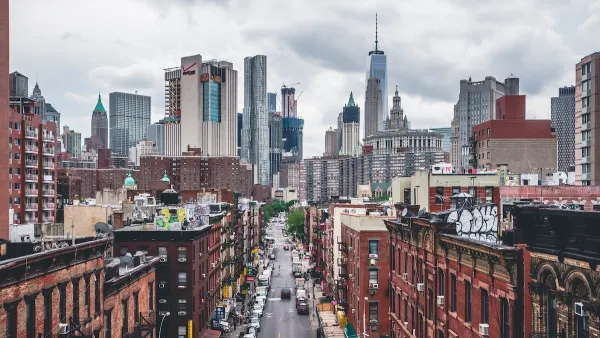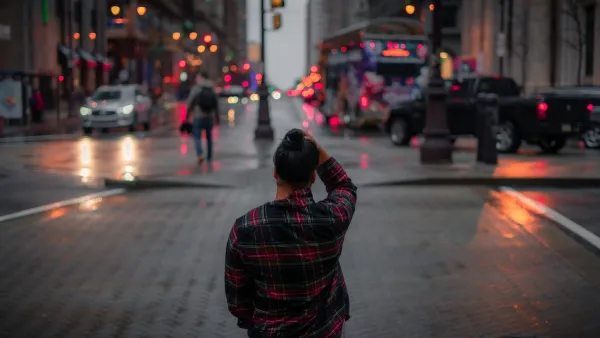After visiting Denver for the Congress for New Urbanism (CNU) conference, I began to meditate on the relationship between Judaism and urbanism, and on how few cities accommodate both. In particular, I was impressed by how well-populated downtown Denver was compared to the southern cities where I have spent the past three years (Jacksonville) and this summer (Little Rock) - but I stll couldn’t imagine myself living in downtown Denver all that comfortably.
After visiting Denver for the Congress for New Urbanism (CNU) conference, I began to meditate on the relationship between Judaism and urbanism, and on how few cities accommodate both. In particular, I was impressed by how well-populated downtown Denver was compared to the southern cities where I have spent the past three years (Jacksonville) and this summer (Little Rock) - but I stll couldn't imagine myself living in downtown Denver all that comfortably.
Why? Because, like many Orthodox and Conservative* Jews, I seek to follow the rule of Jewish law that one should walk, rather than drive or take public transit, to a synagogue on the Sabbath - and the nearest synagogue is three or four miles away, kind of a long walk. If I could live anywhere (rather than being limited by my love for my job) I would prefer to live in a city where I can have my urbanism and my Judaism too.
How do American cities stack up in this regard? I think American cities can be divided into four categories:
Grade A, or The Gold Standard: Cities with large downtown Jewish populations. The true "gold standard" in this regard is of course New York City, where there are synagogues in virtually every neighborhood, and the full panopoly of Jewish options near Midtown. Philadelphia also has downtown synagogues of all stripes (though, alas, no Jewish day school downtown).
Grade B, or Some Life Downtown: Cities with just enough of a core population to support a downtown synagogue or two, plus other congregations in pedestrian- and transit-friendly city neighborhoods. For example, Washington has a couple of downtown congregations, and several more elsewhere in the District of Columbia. But most of Washington's Jews live in the suburbs or in "outer city" (within the city limits, but not near downtown) neighborhoods such as Cleveland Park. Similarly, Pittsburgh has a downtown synagogue, but most of its urban Jews live in outer city Squirrel Hill a few miles away.
Grade C, or Take The Bus: Cities where there is no downtown religious life to speak of, but you can have a full Jewish life if you are willing to take a bus or train from an intown neighborhood a few miles away.
Denver is an excellent example: although there is no downtown synagogue, there are congregations in intown neighborhoods with reasonably good bus service, so you can live in a more-or-less urban neighborhood with ample transit options and still have an adequate Jewish religious life. Similarly, in Jacksonville almost all local synagogues are on the same bus route (though in a setting that is more suburban and less walkable).
Grade D, or Sprawl Hell: In these desolate places, the Jewish population is concentrated in suburbs with minimal or nonexistent transit service. Kansas City presents a dismal example. Only two synagogues (one Reform and one Conservative) are left in the city of Kansas City, and the Conservative one has already moved many of its operations to the Kansas suburbs where the rest of the Jewish population is concentrated. In these Kansas suburbs, most buses stop running around 5:30 PM. Ironically, in Kansas one must have a car to live in a place where one can walk to most synagogues.
(In Grade F cities, there are no synagogues, so the issue is moot).

Analysis: Cybertruck Fatality Rate Far Exceeds That of Ford Pinto
The Tesla Cybertruck was recalled seven times last year.

National Parks Layoffs Will Cause Communities to Lose Billions
Thousands of essential park workers were laid off this week, just before the busy spring break season.

Retro-silient?: America’s First “Eco-burb,” The Woodlands Turns 50
A master-planned community north of Houston offers lessons on green infrastructure and resilient design, but falls short of its founder’s lofty affordability and walkability goals.

Test News Post 1
This is a summary

Analysis: Cybertruck Fatality Rate Far Exceeds That of Ford Pinto
The Tesla Cybertruck was recalled seven times last year.

Test News Headline 46
Test for the image on the front page.
Urban Design for Planners 1: Software Tools
This six-course series explores essential urban design concepts using open source software and equips planners with the tools they need to participate fully in the urban design process.
Planning for Universal Design
Learn the tools for implementing Universal Design in planning regulations.
EMC Planning Group, Inc.
Planetizen
Planetizen
Mpact (formerly Rail~Volution)
Great Falls Development Authority, Inc.
HUDs Office of Policy Development and Research
NYU Wagner Graduate School of Public Service





























